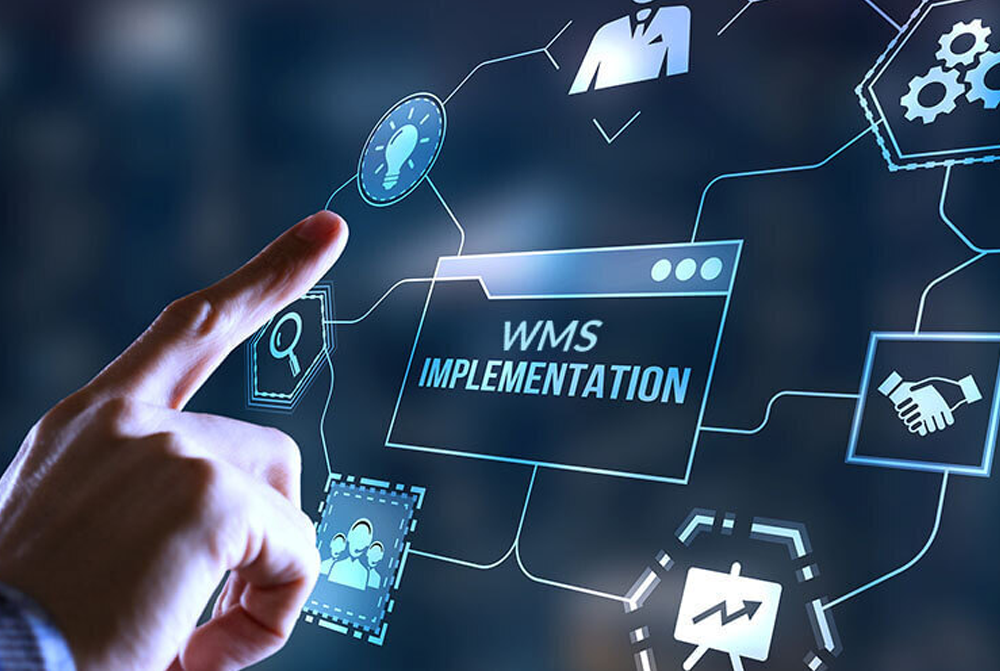Implementing a Warehouse Management System (WMS) can revolutionize the efficiency of your supply chain. A well-executed WMS implementation streamlines warehouse operations, optimizes inventory management, boosts accuracy, and cuts costs.
However, successful implementation requires careful planning, clear understanding, and the right approach. This WMS implementation guide will break down the steps and highlight important WMS requirements.
It will offer an implementation checklist to ensure that every phase of the project is covered. With the right preparation, businesses can significantly improve their logistics and supply chain systems. So, without further ado, let’s get right into it.
WMS Implementation Guide: Key Things to Note When Planning
The global warehouse management system (WMS) market was valued at USD 3.07 billion in 2023 and is expected to grow from USD 3.45 billion in 2024 to USD 9.11 billion by 2032, reflecting a compound annual growth rate (CAGR) of 12.9% during the forecast period. This statistic underscores the industry’s rapid growth and increasing adoption of WMS solutions.
The success of WMS implementation hinges on thorough planning. Before diving into the technicalities, it is essential to have a clear understanding of your WMS requirements and the goals you wish to achieve. Your implementation plan should address key aspects, including integration with existing systems, hardware needs, and personnel training.
Define Business Needs and Objectives
Before implementing a WMS, clearly define your business needs and objectives. Identify specific goals and set realistic expectations for the system. Understand your current pain points in warehousing and how a WMS can address them. Additionally, measurable Key Performance Indicators (KPIs) should be established to track success.
Align Stakeholders
Early stakeholder alignment is crucial for the best WMS experience. Therefore, you should involve key team members from the start to minimize resistance, ensuring everyone understands the WMS goals and benefits. Moreover, the formation of a steering committee to oversee the project’s implementation can be helpful.
Identify WMS Providers
When identifying WMS providers, consider whether a cloud-based or on-premises solution best suits your needs. Prioritize providers with proven experience in your specific industry. Thoroughly discuss ongoing support options and the system’s ability to scale with your growing business.
WMS Implementation Checklist
Once you’ve clearly defined your objectives and chosen a provider, it’s time to tackle the implementation steps. Below is a comprehensive implementation checklist that will guide you throughout the project.
Initial System Configuration
Initial WMS configuration involves setting up the software and configuring the warehouse layout and workflows. Next up, we have the process for integrating the WMS with existing Enterprise Resource Planning (ERP) systems for seamless data flow.
Hardware Setup
Choose and install necessary hardware, such as barcode scanners and RFID tags, ensuring compatibility with the WMS software. Then, thoroughly test all hardware to verify proper functionality before full implementation.
WMS Testing
To begin, conduct extensive WMS testing in varied environments. Next, test for accuracy, speed, and system integration. Finally, run pilot programs using real data to identify and resolve any remaining issues before full deployment.
Training and Change Management
Initially, provide hands-on training for all warehouse employees. Subsequently, ensure workers are comfortable with the new system. Finally, effectively manage any resistance to the change for smooth adoption.
Go Live and Continuous Support
Following the go-live date, it’s crucial to closely monitor system performance. Furthermore, continuous support should be offered to troubleshoot any emerging issues. Finally, the system should be fine-tuned based on real-world usage to optimize its effectiveness.
WMS Cloud and Its Impact on Implementation
The shift toward WMS cloud solutions has made implementation easier and more cost-effective. Cloud-based WMS offers several advantages over traditional systems, including scalability, flexibility, and ease of access. By leveraging the cloud, businesses can reduce the time spent on maintenance and IT support. Here are the cloud deployment benefits:
- Fast implementation with minimal upfront costs.
- Real-time data updates offering visibility across multiple locations.
- Enhanced security and backup protocols.
- Easy integration with other cloud-based platforms like ERP and CRM systems.
- No need for on-site infrastructure, reducing hardware costs.
- Increased flexibility for remote access and management.
Importance of WMS Testing
WMS testing is an essential part of the implementation process. Before launching the system, you need to ensure that it functions correctly under various conditions. Testing will help identify potential issues in inventory management, shipment tracking, and overall system integration. There are different types of testing, such as:
- Functional Testing: Verifies that all features work as intended.
- Stress Testing: Checks how the system handles large volumes of data.
- Integration Testing: Ensures seamless integration with other systems, like ERP.
Conclusion
A successful WMS implementation can streamline operations and significantly reduce costs. This WMS implementation guide gives you a clear idea about the things to consider when implementing it. The right implementation checklist and careful planning will help avoid errors, while the WMS cloud offers scalability and flexibility.
Don’t overlook WMS testing, as it ensures smooth operation and accuracy. With a well-executed plan, your WMS can become a key driver of operational success. For expert guidance on your WMS journey, get in touch with WizeFulFill today and unlock the potential of your warehouse operations.



